The canalicular multispecific organic anion transporter (cMOAT), also termed MRP2, is a recently identified ATPbinding cassette transporter We previously established stable human cMOAT cDNAtransfected cells, LLC/cMOAT1 from LLCPK1 cells, and LLC/CMV cells that were transfected with an empty vectorAbstract We investigated the role of cMOAT/MRP2 (canalicular multispecific organic anion transporter/multidrug resistanceassociated protein 2) in the intestinal secretion of organic anions by comparing the behavior in SpragueDawley (SD) rats and Eisai hyperbilirubinemic rat (EHBR) whose cMOAT/MRP2 is hereditarily defectiveBackground Multidrug resistanceassociated protein (MRP) and canalicular multispecific organic anion transporter (cMOAT) are transporter proteins that pump organic anions across cellular membranes and have been linked to resistance to cytotoxic drugs

Abc Of Oral Bioavailability Transporters As Gatekeepers In The Gut Gut
Cmoat transporter
Cmoat transporter-Associated protein 2 (MRP2/cMOAT) is highly expressed in the bile canaliculus of hepatocytes and mediates hepatobiliary trans port of many organic compounds including GSH (16–19)Radiolabeled substrate was added to 50 mlof23reaction buffer ( mM MES/Tris, pH 80, 10 mM ATP, mM MgCl 2
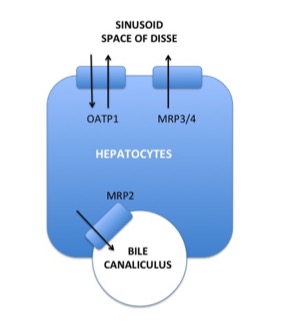


Epos Trade
CMOAT abbreviation stands for Canalicular Multispecific Organic Anion TransporterCorrection to "Both cMOAT/MRP2 and another unknown transporter(s) are responsible for the biliary excretion of glucuronide conjugate of the nonpeptide angiotensin II antagonist, telmisaltan" Drug Metabolism and Disposition January 01, 29 (1) ;This transporter was originally known as the canalicular multispecific organic anion transporter (cMOAT), but it is now called MRP2 Its substrate specificity was defined in detail with the help of a rat strain (TR − /GY) lacking cMOAT
Ensembl ENSG ENSMUSG UniProt O Q9R1X5 RefSeq (mRNA) NM_ NM_0056 NM_ NM_ NM_1769 RefSeq (protein) NP_ NP_ NP_ NP_0318 NP_7809 Location (UCSC) Chr 3 192 – Mb Chr 16 33 – 43 Mb PubMed search Wikidata View/Edit Human View/Edit Mouse Multidrug resistanceassociated protein 5 is a proteinMultidrug resistanceassociated protein 2 (MRP2) also called canalicular multispecific organic anion transporter 1 (cMOAT) or ATPbinding cassette subfamily C member 2 (ABCC2) is a protein that in humans is encoded by the ABCC2 geneCorrection to "Both cMOAT/MRP2 and another unknown transporter(s) are responsible for the biliary excretion of glucuronide conjugate of the nonpeptide angiotensin II antagonist, telmisaltan" Drug Metabolism and Disposition January 01, 29 (1) ;
How is Canalicular Multispecific Organic Anion Transporter abbreviated?Background Multidrug resistanceassociated protein (MRP) and canalicular multispecific organic anion transporter (cMOAT) are transporter proteins that pump organic anions across cellular membranes and have been linked to resistance to cytotoxic drugsThe exporter ABCC2 (cMOAT, MRP2) is a membranebound protein on the apical side of enterocytes and hepatic biliary vessels that transports leukotriene C 4, glutathione, some conjugated bile salts, drugs, xenobiotics, and phytonutrients The latter class includes quercetin, a bioactive flavonoid found in foods such as onions, apples, tea, and wine



Pdf Drug Export Activity Of The Human Canalicular Multispecific Organic Anion Transporter In Polarized Kidney Mdck Cells Expressing Cmoat Mrp2 Cdna Semantic Scholar



How To Spell Cmoat And How To Misspell It Too Spellcheck Net
Associated protein 2 (MRP2/cMOAT) is highly expressed in the bile canaliculus of hepatocytes and mediates hepatobiliary trans port of many organic compounds including GSH (16–19)A human clone homologous to rat canalicular multispecific organic anion transporter (cMOAT) was found and designated human cMOAT Fluorescence in situ hybridization demonstrated the chromosomal locus of the gene on chromosome 10q24Etoposide transport kinetics were characterized in Caco2 cells and in well established MadinDarby canine kidney (MDCKII) cell lines that were stablytransfected with a human cDNA encoding Pglycoprotein (Pgp), human multidrug resistance protein (MRP1), or the canalicular multispecific organic anion (cMOAT) transporters to determine the roles of these transporters in etoposide efflux
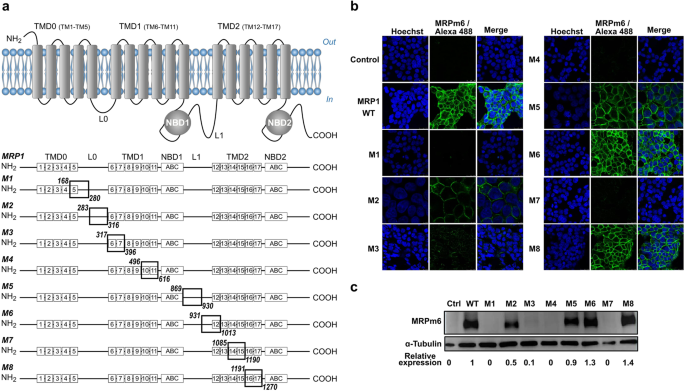


Molecular Analysis Of The Massive Gsh Transport Mechanism Mediated By The Human Multidrug Resistant Protein 1 Abcc1 Scientific Reports
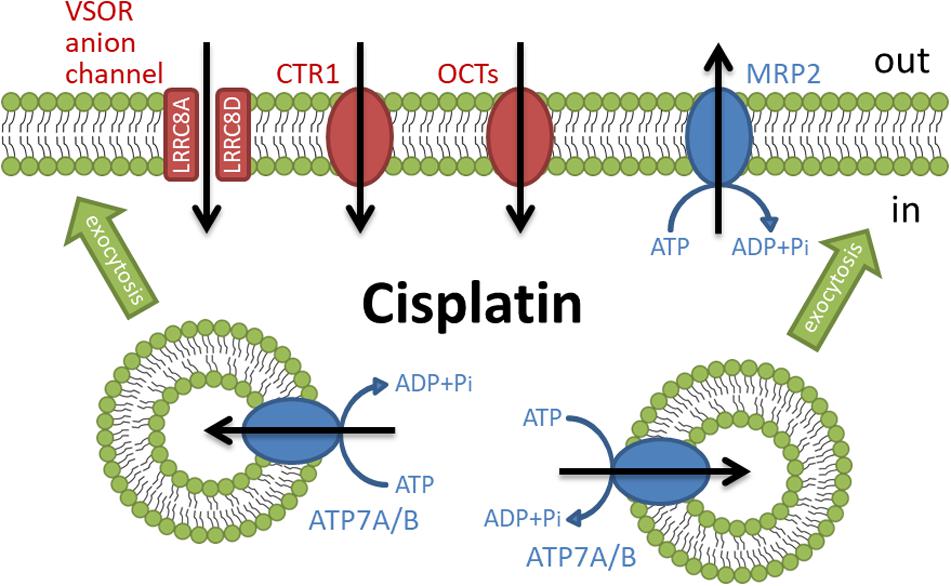


Frontiers The Relationship Between Actin Cytoskeleton And Membrane Transporters In Cisplatin Resistance Of Cancer Cells Cell And Developmental Biology
Multidrug resistance protein 2 (MRP2), also known as cMRP, cMOAT, and ABCC2, is an ATP binding cassette (ABC) transporter and part of the multidrug resistance (MRP) family The MRP proteins are membrane proteins that function as organic anion pumps involved in the cellular removal of cancer drugsWhat does CMOAT stand for?Etoposide transport kinetics were characterized in Caco2 cells and in well established MadinDarby canine kidney (MDCKII) cell lines that were stablytransfected with a human cDNA encoding Pglycoprotein (Pgp), human multidrug resistance protein (MRP1), or the canalicular multispecific organic anion (cMOAT) transporters to determine the roles of these transporters in etoposide efflux



Cisplatin Induces Renal Expression Of P Glycoprotein And Canalicular Multispecific Organic Anion Transporter American Journal Of Physiology Renal Physiology



Differences In The Expression Of Endogenous Efflux Transporters In Mdr1 Transfected Versus Wildtype Cell Lines Affect P Glycoprotein Mediated Drug Transport Abstract Europe Pmc
Oude Elferink et al 1990, 1995)The human cMOAT gene encodes a membrane protein involved in the ATPdependent transport of hydrophobic compounds To determine whether cMOAT is associated with drug sensitivity, we transfected an expression vector containing cMOAT antisense cDNA into the HepG2 human hepatic cancer cell lineThe major basolateral membrane transporter involved in renal Na and K exchange is the primary renal Na /K ATPase which is composed of the α 1 subunit encoded by the ATP1A1 gene and the β 1 subunit encoded by the ATP1B1 gene
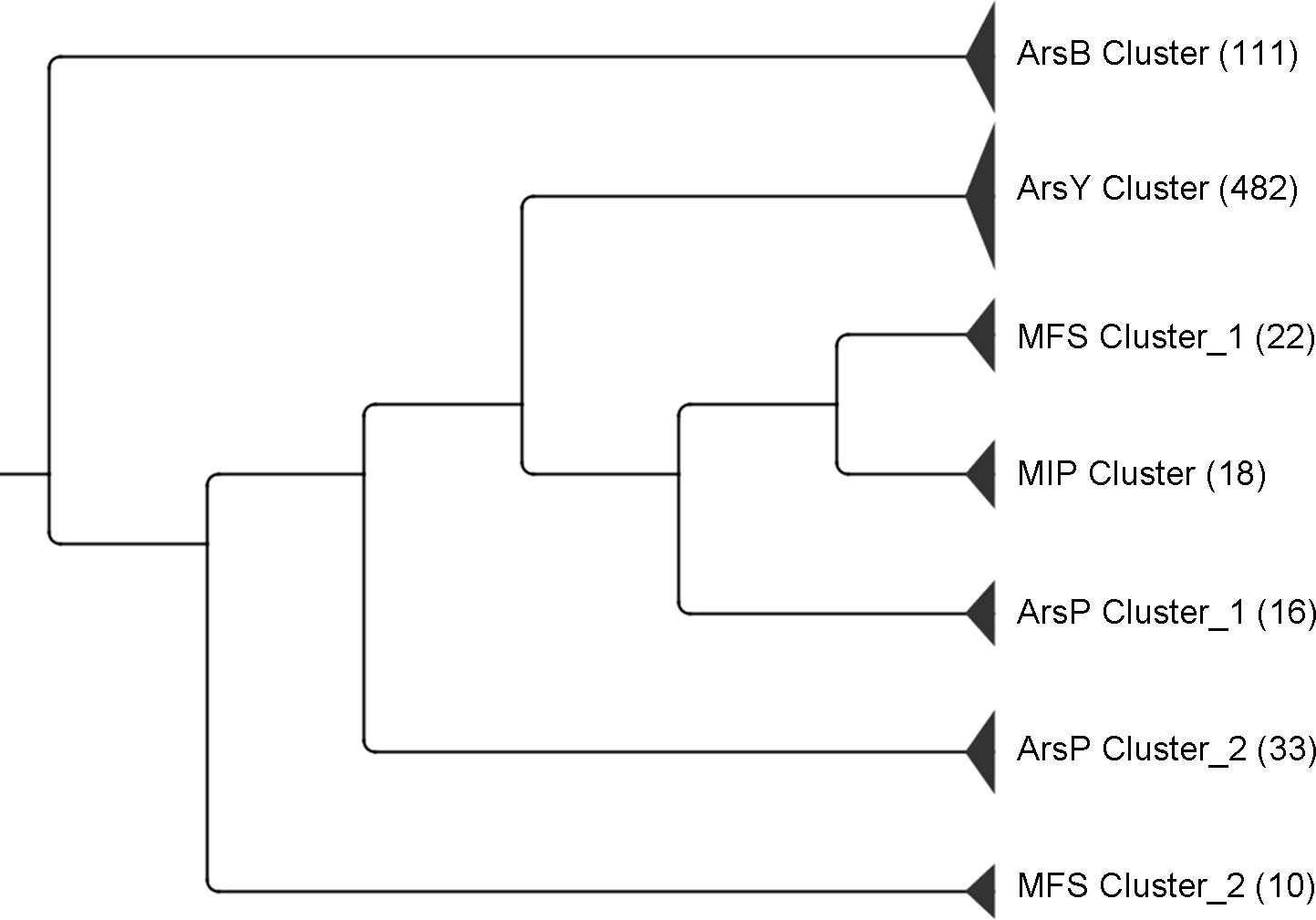


The Diversity Of Membrane Transporters Encoded In Bacterial Arsenic Resistance Operons Peerj



Molecular Aspects Of Bile Formation And Cholestasis Trends In Molecular Medicine
The canalicular multispecific organic anion transporter (cMOAT), a member of the ATPbinding cassette transporter family, mediates the transport of a broad range of nonbile salt organic anions from liver into bile cMOATdeficient Wistar rats (TR) are mutated in the gene encoding cMOAT, leading to defective hepatobiliary transport of a whole range of substrates, including bilirubin glucuronide These mutants also have impaired hepatobiliary excretion of GSH and, as a result, the bile flowA human clone homologous to rat canalicular multispecific organic anion transporter (cMOAT) was found and designated human cMOAT Fluorescence in situ hybridization demonstrated the chromosomal locus of the gene on chromosome 10q24Canalicular multispecific organic anion transporter (cMOAT/MRP2) is known to play a major role in the transport of anionic xenobiotics including many types of glucuronide and glutathione conjugates across the bile canalicular membrane



The Mrp2 Cmoat Transporter And Arsenic Glutathione Complex Formation Are Required For Biliary Excretion Of Arsenic Sciencedirect



The Human Atp Binding Cassette Abc Transporter Superfamily Journal Of Lipid Research
ATPbinding cassette (ABC) transporters are a large and ubiquitous superfamily of proteins in all living organisms from microbes to humans They translocate their substrates either in or out of the cells, by serving as importers and exporters, respectivelyABC proteins transport various molecules across extra and intracellular membranes ABC genes are divided into seven distinct subfamilies (ABC1, MDR/TAP, MRP, ALD, OABP, GCN, White) This protein is a member of the MRP subfamily which is involved in multidrug resistance The specific function of this protein has not yet been determinedAliases ABC30, CMOAT, DJS, cMRP Gene name ATP binding cassette subfamily C member 2 (ABCC2) Summary The predicted membrane topology of MRP2 transporter includes 12 transmembrane domains with at least two substratebinding sites MRP2 localizes to the apical membrane domain of polarized cells such as hepatocytes, renal proximal tubule



Irinotecan Mechanisms Of Tumor Resistance And Novel Strategies For Modulating Its Activity Annals Of Oncology



Tansporters And Disposition Of Drugs Ppt Video Online Download
Canalicular multispecific organic anion transporter (cMOAT/MRP2) is known to play a major role in the transport of anionic xenobiotics including many types of glucuronide and glutathione conjugates across the bile canalicular membraneThe major basolateral membrane transporter involved in renal Na and K exchange is the primary renal Na /K ATPase which is composed of the α 1 subunit encoded by the ATP1A1 gene and the β 1 subunit encoded by the ATP1B1 geneMultidrug resistanceassociated protein (MRP) and canalicular multispecific organic anion transporter (cMOAT) are transporter proteins that pump organic anions across cellular membranes and have



Multidrug Resistance Associated Protein An Overview Sciencedirect Topics



Monitoring Protein Protein Interactions Between The Mammalian Integral Membrane Transporters And Pdz Interacting Partners Using A Modified Split Ubiquitin Membrane Yeast Two Hybrid System Molecular Cellular Proteomics
Here, presentation of the Chlamydomonas ABC transporter superfamily will be restricted to the members of the MRP and ATM/HMT subfamilies because members of these subfamilies contribute to metal transport in plants and S cerevisiaeMultidrug resistance protein 2 (MRP2), also known as cMRP, cMOAT, and ABCC2, is an ATP binding cassette (ABC) transporter and part of the multidrug resistance (MRP) family The MRP proteins are membrane proteins that function as organic anion pumps involved in the cellular removal of cancer drugsMRP2 (cMOAT / ABCC2) is expressed in many tissues and transports relatively hydrophilic drugs Drugs are excreted by MRP2 into bile from the liver and into the lumen of the small intestine or into urine from the kidney MRP2 may cause multidrug resistance and drugdrug interactions along with MDR1 and BCRP



Figure 1 From The Mrp2 Cmoat Transporter And Arsenic Glutathione Complex Formation Are Required For Biliary Excretion Of Arsenic Semantic Scholar



Anti Abcc4 Multidrug Resistance Associated Protein 4 Atp Binding Cassette Sub Family C Member 4 M United States Biological Biomol Com
The MRP2/cMOAT transporter and arsenicglutathione complex formation are required for biliary excretion of arsenic Kala SV(1), Neely MW, Kala G, Prater CI, Atwood DW, Rice JS, Lieberman MW Author information (1)Departments of Pathology and Molecular and Cellular Biology, Baylor College of Medicine, Houston, Texas , USACMOAT stands for Canalicular Multispecific Organic Anion Transporter cMOAT is defined as Canalicular Multispecific Organic Anion Transporter frequentlyThis transporter was originally known as the canalicular multispecific organic anion transporter (cMOAT), but it is now called MRP2 Its substrate specificity was defined in detail with the help of a rat strain (TR − /GY) lacking cMOAT



Overview Role Of Drug Transporters In Drug Disposition And Its Clinical Significance Springerlink



Exon Intron Organization Of The Human Multidrug Resistance Protein 2 Mrp2 Gene Mutated In Dubin Johnson Syndrome Gastroenterology
Multidrug resistanceassociated protein 2 (MRP2) also called canalicular multispecific organic anion transporter 1 (cMOAT) or ATPbinding cassette subfamily C member 2 (ABCC2) is a protein that in humans is encoded by the ABCC2 geneA human canalicular multispecific organic anion transporter (cMOAT) gene is overexpressed in cisplatinresistant human cancer cell lines with decreased drug accumulation Cancer Res , 56 ( 1996 ) , pp 4124 4129Hepatobiliary excretion of conjugated bilirubin is mediated by an ATPdependent transport system, a canalicular multispecific organic anion transporter (cMOAT) (MIM ), in the apical (canalicular) membrane of hepatocytes (Kitamura et al 1990;



Functional Analysis Of A Canalicular Multispecific Organic Anion Transporter Cloned From Rat Liver Journal Of Biological Chemistry



Membrane Transporters And Drug Response
Multidrug resistanceassociated protein 2 (MRP2) also called canalicular multispecific organic anion transporter 1 (cMOAT) or ATPbinding cassette subfamily C member 2 (ABCC2) is a protein that in humans is encoded by the ABCC2 geneSeveral organic anions are excreted into the bile via a canalicular multispecific organic anion transporter (cMOAT), which is hereditarily defective in mutant rats, such as the Eisai hyperbilirubinHuman canalicular multispecific organic anion transporter (cMOAT/MRP2) also belongs to the ABC transporter superfamily and shows a 49% amino acid identity to human MRP1, Rat and rabbit cMOAT transport a GSH conjugate, leukotriene C 4 (LTC 4), which is a high affinity endogenous substrate for MRP1,,,
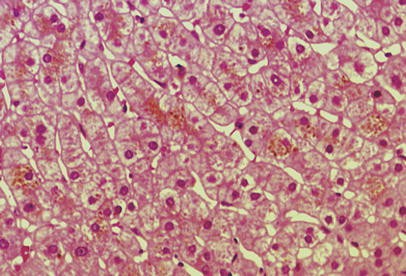


Homozygous Mutation Arg 768 Trp In The Abc Transporter Encoding Gene Mrp2 Cmoat Abcc2 Causes Dubin Johnson Syndrome In A Caucasian Patient Journal Of Human Genetics



Xmlinkhub
What is the abbreviation for Canalicular Multispecific Organic Anion Transporter?The canalicular multispecific organic anion transporter, cMoat, is an ATPbindingcassette protein expressed in the canalicular domain of hepatocytes In addition to the transport of endo and xenobiotics, cMoat has also been proposed to transport GSH into bile, the major driving force of bileacidindependent bile flowRecently, Paulusma et al demonstrated that rat cMOAT is a liverspecific homolog of the MRP;



Functional Analysis Of A Canalicular Multispecific Organic Anion Transporter Cloned From Rat Liver Sciencedirect



Multidrug Resistance Associated Protein 2 Wikipedia
The most extensively studied member of this family is cMOAT, the canalicular Multispecific Organic Anion Transporter The substrate specificity of this pump was originally defined by an inborn error in rats, lacking this protein These rats are mildly hyperbilirubinemic, because of their inability to secrete bilirubin glucuronides into their bileThey reported that TR − rats, an animal model of DJS, are defective in anion transporter (cMOAT) and found a single nucleotide deletion mutation at nucleotide 1179 in the gene, resulting in reduced mRNA abundance and absence of the protein (10)ATPbinding cassette (ABC) transporters are a large and ubiquitous superfamily of proteins in all living organisms from microbes to humans They translocate their substrates either in or out of the cells, by serving as importers and exporters, respectively



Identification Of The Apical Membrane Targeting Signal Of The Multidrug Resistance Associated Protein 2 Mrp2 Cmoat Journal Of Biological Chemistry



Associations Of Genetic Polymorphisms Of The Transporters Organic Cation Transporter 2 Oct2 Multidrug And Toxin Extrusion 1 Mate1 And Atp Binding Cassette Subfamily C Member 2 Abcc2
Overall, the current study suggests that Pgp and cMOAT are capable of mediating the efflux of CPT11 in vitro Since both Pgp and cMOAT are expressed in the intestine, liver, and kidney, it is likely that these efflux transporters play a significant role limiting the oral absorption and disposition of this important anticancer drugMultidrug resistanceassociated protein (MRP) and the canalicular multispecific organic anion transporter (cMOAT) are organic anion pumps that have been linked to cytotoxic drug resistance We previously reported the isolation of three human MRP/cMOATrelated transporters, MOATB (MRP4), MOATC (MRP5) and MOATD (MRP3)Overall, the current study suggests that Pgp and cMOAT are capable of mediating the efflux of CPT11 in vitro Since both Pgp and cMOAT are expressed in the intestine, liver, and kidney, it is likely that these efflux transporters play a significant role limiting the oral absorption and disposition of this important anticancer drug
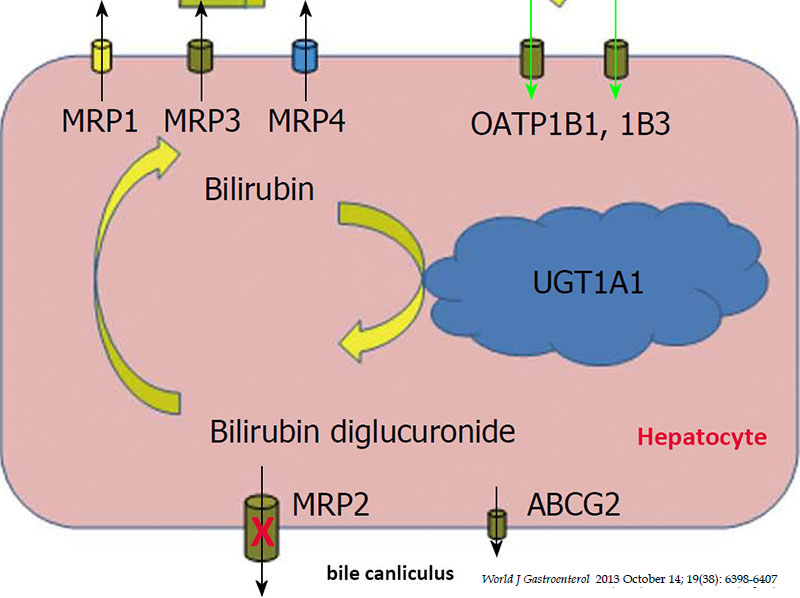


Dubin Johnson Syndrome The Medical Biochemistry Page



Multidrug Resistance Associated Protein 4 Abcc4 Antibody Abbexa Ltd
Abstract We investigated the role of cMOAT/MRP2 (canalicular multispecific organic anion transporter/multidrug resistanceassociated protein 2) in the intestinal secretion of organic anions by comparing the behavior in SpragueDawley (SD) rats and Eisai hyperbilirubinemic rat (EHBR) whose cMOAT/MRP2 is hereditarily defectiveMultispecific Organic Anion Transporter Is Responsible for the Biliary Excretion of the Camptothecin Derivative Irinotecan and its Metabolites in Rats XiaoYan Chu, Yukio Kato, Kayoko Niinuma, KenIchi Sudo, Hideo Hakusui and Yuichi Sugiyama Journal of Pharmacology and Experimental Therapeutics April 1997, 281 (1) ;Transport Assays—ATPdependent transport of 3HDNPSG and BA was measured by the standard vesicle filtration assay Transport by secretory vesicles was determined as described previously (23) Vacuolar transport was measured as follows;



Pdf Induction Of The Multispecific Organic Anion Transporter Cmoat Mrp2 Gene And Biliary Glutathione Secretion By The Herbicide 2 4 5 Trichlorophenoxyacetic Acid In The Mouse Liver



The Mrp2 Cmoat Transporter And Arsenic Glutathione Complex Formation Are Required For Biliary Excretion Of Arsenic Sciencedirect
Organic anion transporter (cMOAT), located in the apical (canalicular) membrane of hepatocytes ( 5–7) The multidrug resistanceassociated protein (MRP) can also transport glutathione conjugates leucotriene C 4 (LTC ) and dinitrophenyl glutathione (GSDNP) (8,9), which are also putative substrates for transport by cMOAT



Expression Of Multidrug Resistance Protein 3 Multispecific Organic Anion Transporter D In Human Embryonic Kidney 293 Cells Confers Resistance To Anticancer Agents Cancer Research



Epos Trade
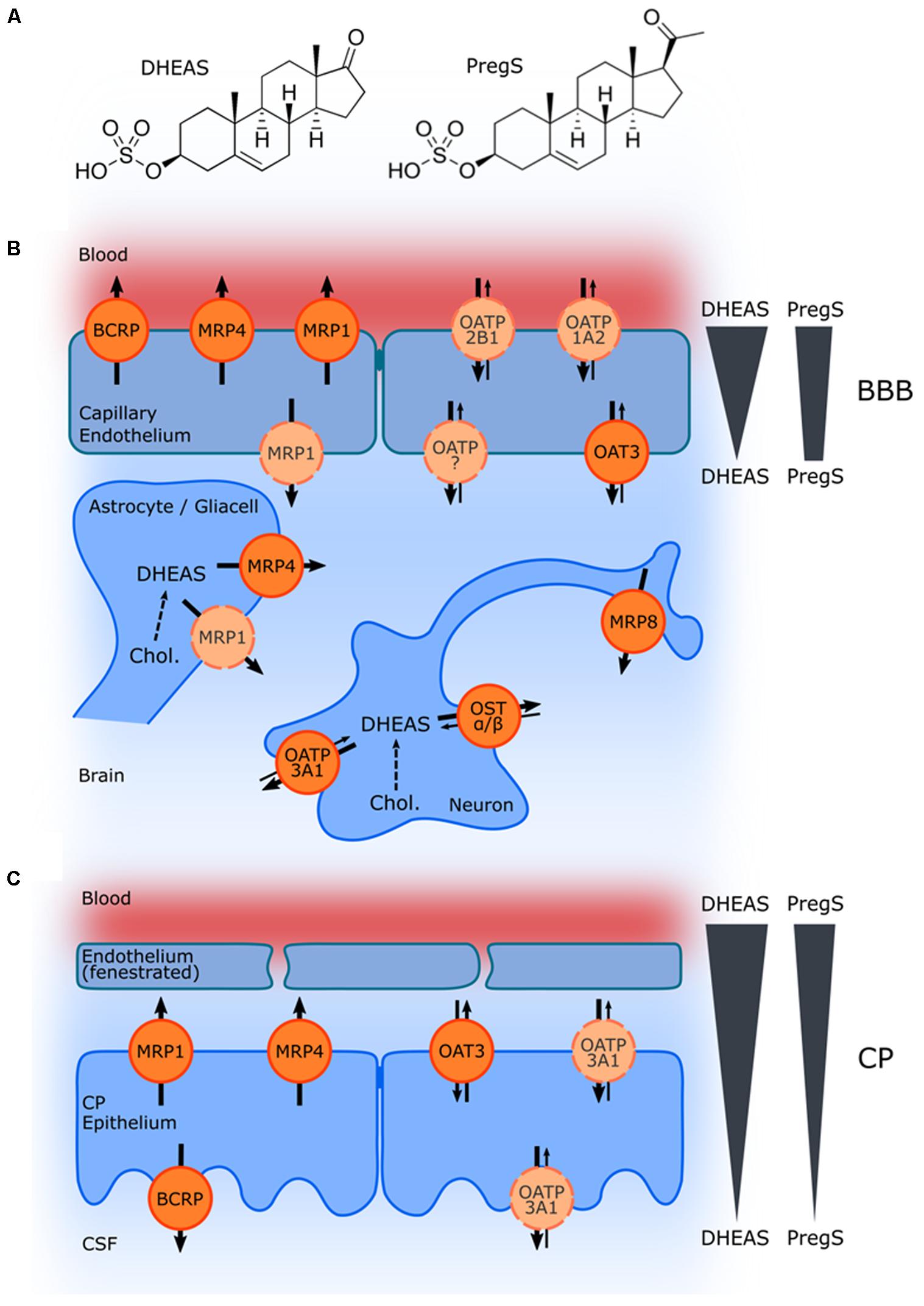


Frontiers Neurosteroid Transport In The Brain Role Of Abc And Slc Transporters Pharmacology


Gale Academic Onefile Document Transmembrane Transport Of Endo And Xenobiotics By Mammalian Atp Binding Cassette Multidrug Resistance Proteins


Abcc2 Atp Binding Cassette Subfamily C Member 2 Gene Report Biogps



Molecular Pathogenesis Of Cholestasis Nejm


Abcc2 Canalicular Multispecific Organic Anion Transporter 1 Homo Sapiens Human Abcc2 Gene Protein



Expression Of Multidrug Resistance Protein 3 Multispecific Organic Anion Transporter D In Human Embryonic Kidney 293 Cells Confers Resistance To Anticancer Agents Cancer Research



Case 19 A Pleasant Child Who Developed Prolonged Jaundice Springerlink



Also Dr Chu Hence Direct Conjugated Cmoat The Protein Was Originally Termed The Canalicular Multiple Organic Mnemonics Internal Medicine Medicine



Table 1 From Moat E Ara Is A Full Length Mrp Cmoat Subfamily Transporter Expressed In Kidney And Liver Semantic Scholar



Figure 1 From The Mrp2 Cmoat Transporter And Arsenic Glutathione Complex Formation Are Required For Biliary Excretion Of Arsenic Semantic Scholar



Atp Binding Cassette Transporters In Progression And Clinical Outcome Of Pancreatic Cancer What Is The Way Forward



Metabolism Of Hepatic Bilirubin Alb Serum Albumin Cbat Canalicular Download Scientific Diagram



Functional Analysis Of A Canalicular Multispecific Organic Anion Transporter Cloned From Rat Liver Journal Of Biological Chemistry



Abcc2 Gene Genecards Mrp2 Protein Mrp2 Antibody



Molecular Aspects Of Organic Compound Transport Across The Plasma Membrane Of Hepatocytes Kamisako 1999 Journal Of Gastroenterology And Hepatology Wiley Online Library



Epos Trade



Multidrug Resistance Associated Protein 2 Wikipedia



Metabolism Of Hepatic Bilirubin Alb Serum Albumin Cbat Canalicular Download Scientific Diagram



Consequences Of Bile Duct Obstruction On Intestinal Expression And Function Of Multidrug Resistance Associated Protein 2 Gastroenterology



Expression And Phylogeny Of Multidrug Resistance Protein 2 And 4 In African White Backed Vulture Gyps Africanus Peerj



Temocaprilat A Novel Angiotensin Converting Enzyme Inhibitor Is Excreted In Bile Via An Atp Dependent Active Transporter Cmoat That Is Deficient In Eisai Hyperbilirubinemic Mutant Rats Ehbr Journal Of Pharmacology And Experimental Therapeutics



The Atp Binding Cassette Transporters And Their Implication In Drug Disposition A Special Look At The Heart Pharmacological Reviews
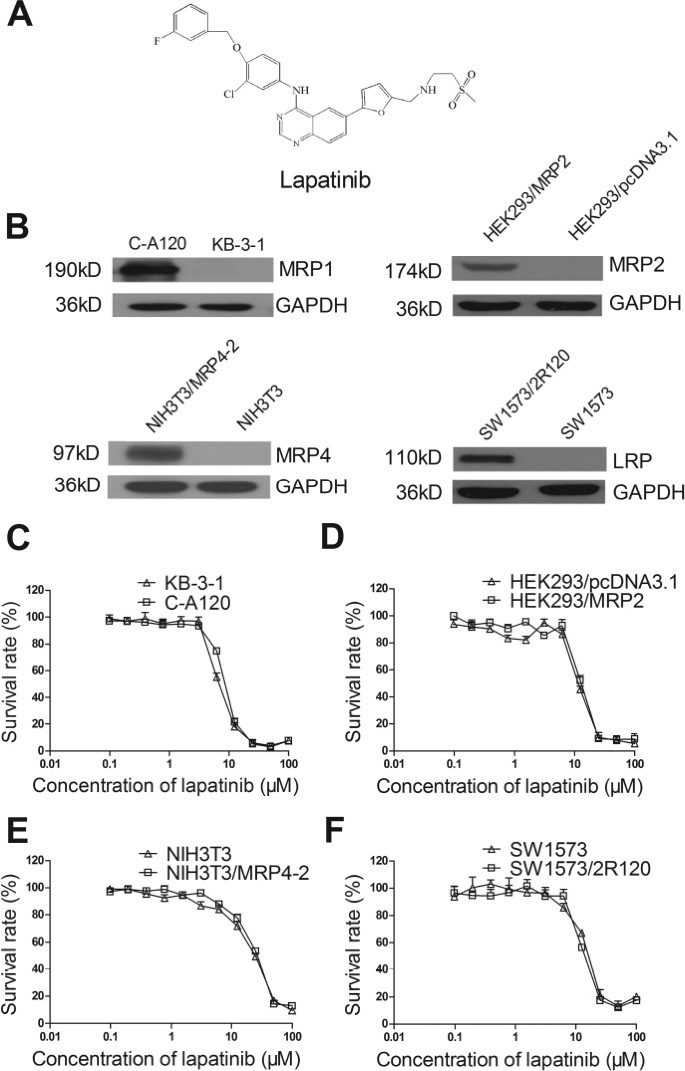


Lapatinib Antagonizes Multidrug Resistance Associated Protein 1 Mediated Multidrug Resistance By Inhibiting Its Transport Function Molecular Medicine Full Text


Cmoat Canalicular Multispecific Organic Anion Transporter By Acronymsandslang Com



Analysis Of Methotrexate And Folate Transport By Multidrug Resistance Protein 4 Abcc4 Cancer Research



Abcc4 Gene Genecards Mrp4 Protein Mrp4 Antibody



Rt Pcr Screen For Mrna Expression Of P Glycoprotein Mdr1 Multidrug Download Scientific Diagram



Antibodies Abs To Multi Drug Resistance Mdr Mybiosource



Detection Of A Cmoat Splicing Mutation In Dj7 A Gel Electrophoresis Download Scientific Diagram


Atmrp2 An Arabidopsis Atp Binding Cassette Transporter Able To Transport Glutathione S Conjugates And Chlorophyll Catabolites Functional Comparisons With Atmrp1 Plant Cell



What Does Cmoat Stand For



Figure 1 From The Canalicular Multispecific Organic Anion Transporter And Conjugated Hyperbilirubinemia In Rat And Man Semantic Scholar



Molecular Aspects Of Organic Compound Transport Across The Plasma Membrane Of Hepatocytes Kamisako 1999 Journal Of Gastroenterology And Hepatology Wiley Online Library


Abcc2 Canalicular Multispecific Organic Anion Transporter 1 Homo Sapiens Human Abcc2 Gene Protein
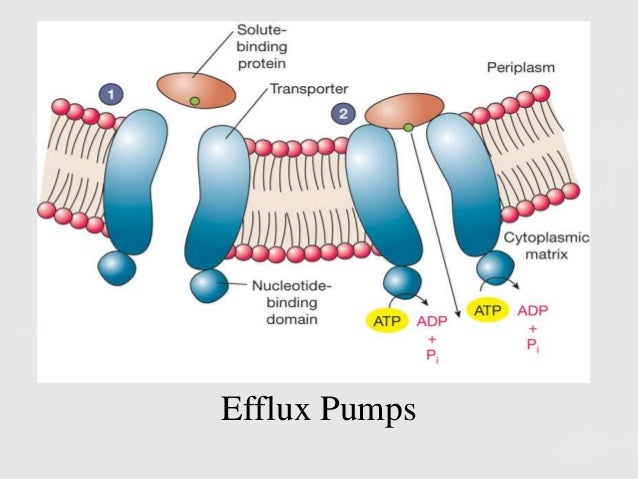


Membrane Transporters And Drug Response



Delineating The Contribution Of Secretory Transporters In The Efflux Of Etoposide Using Madin Darby Canine Kidney Mdck Cells Overexpressing P Glycoprotein Pgp Multidrug Resistance Associated Protein Mrp1 And Canalicular Multispecific Organic



Pdf Induction Of The Multispecific Organic Anion Transporter Cmoat Mrp2 Gene And Biliary Glutathione Secretion By The Herbicide 2 4 5 Trichlorophenoxyacetic Acid In The Mouse Liver



Small Intestine Transporter Data



Multidrug Resistance Associated Protein 2 Wikipedia



Anti Abcb4 Antibody Rabbit Anti Human Mdr2 Polyclonal Antibody Np 1



Role Of Abc Transporters In Lipid Transport And Human Disease Trends In Endocrinology Metabolism



The Roles Of Mrp2 Mrp3 Oatp1b1 And Oatp1b3 In Conjugated Hyperbilirubinemia Drug Metabolism Disposition



Top Pdf Organic Anion Transporter 1library



Quaternary Structure Of The Lactose Transport Protein Ofstreptococcus Thermophilus In The Detergent Solubilized And Membrane Reconstituted State Journal Of Biological Chemistry
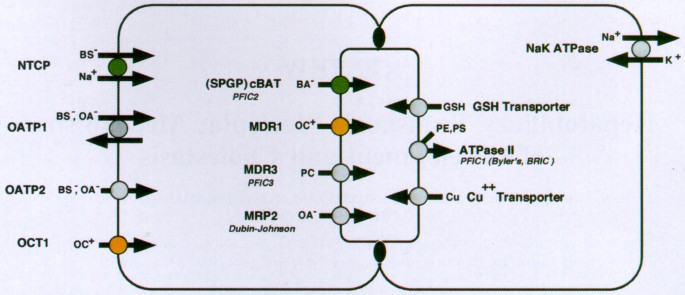


Hepatobiliary Transport Molecular Mechanisms Of Development And Cholestasis Pediatric Research



Abc Of Oral Bioavailability Transporters As Gatekeepers In The Gut Gut



Pdf Transport Of Amphipathic Anions By Human Multidrug Resistance Protein 3 Semantic Scholar



Induction Of The Multispecific Organic Anion Transporter Cmoat Mrp2 Gene And Biliary Glutathione Secretion By The Herbicide 2 4 5 Trichlorophenoxyacetic Acid In The Mouse Liver Abstract Europe Pmc



Smpdb



Figure 4 From Physicochemical Parameters Responsible For The Affinity Of Methotrexate Analogs For Rat Canalicular Multispecific Organic Anion Transporter Cmoat Mrp2 Semantic Scholar



Sid Pubchem



Cisplatin Induces Renal Expression Of P Glycoprotein And Canalicular Multispecific Organic Anion Transporter American Journal Of Physiology Renal Physiology



Abcc2 Gene Genecards Mrp2 Protein Mrp2 Antibody



Abc Of Oral Bioavailability Transporters As Gatekeepers In The Gut Gut



Effect Of Oltipraz Treatment On Cmoat And Gst P1 Mrna A And Protein Download Scientific Diagram



Effect Of Multidrug Resistance Reversing Agents On Transporting Activity Of Human Canalicular Multispecific Organic Anion Transporter Molecular Pharmacology


Gale Academic Onefile Document Expression Of Multidrug Resistance Associated Protein 2 In Human Gallbladder Carcinoma



The Human Atp Binding Cassette Abc Transporter Superfamily Ncbi Bookshelf



Xenobiotic Transporters In The Kidney Function And Role In Toxicity Seminars In Nephrology



0 件のコメント:
コメントを投稿